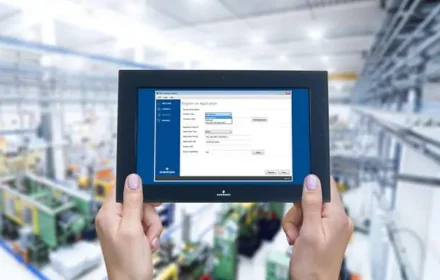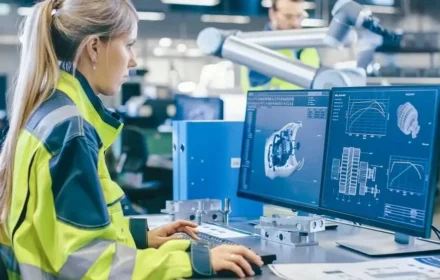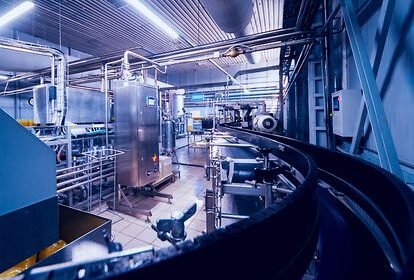RX3i PLC Systems: Powering Next-Generation Industrial Automation
Modern manufacturing demands robust control systems that deliver precision and reliability. According to MarketsandMarkets research, the programmable logic controller market will reach $15.2 billion by 2026. GE Vernova’s RX3i PLC stands at the forefront of this growth, providing advanced capabilities for complex automation challenges.
RX3i PLC Core Capabilities for Factory Automation
The PACSystems RX3i represents a significant evolution in industrial control technology. These systems combine high-speed processing with modular flexibility. They serve as the central nervous system for modern manufacturing operations.
Key performance advantages include:
- Universal Backplane with 2GB/s data transfer capacity
- Intel multi-core processor technology for complex algorithm execution
- Hot-swappable modules that minimize system downtime
- Integrated security features meeting IEC 62443 standards
Advanced Motion Control Applications
RX3i systems excel in demanding motion applications through specialized motion modules. These modules support complex multi-axis coordination with microsecond-level precision. The platform’s deterministic architecture ensures consistent performance.
Motion control benefits include:
- Synchronized control of up to 32 axes with single-controller architecture
- Integrated safety motion functions meeting SIL 3/PLe safety standards
- Advanced compensation for mechanical system imperfections
- Real-time adaptive tuning for changing load conditions
Seamless Servo System Integration
Modern servo integration requires both protocol compatibility and processing power. RX3i controllers support multiple industrial networks including PROFINET, EtherNet/IP, and EtherCAT. This flexibility enables optimal servo selection for each application.
Integration advantages include:
- Unified configuration through Machine Edition programming software
- Deterministic network performance with sub-millisecond update times
- Advanced diagnostic capabilities for preventive maintenance
- Standardized drive parameter management across vendor platforms
Control System Selection: PLC vs. DCS vs. PAC
Choosing between control architectures requires understanding operational requirements. While traditional PLCs handle discrete manufacturing, and DCS manages process operations, PAC systems like RX3i bridge both domains.
Selection criteria should consider:
- I/O count requirements and system scalability needs
- Motion control and process loop execution demands
- Data management and enterprise connectivity requirements
- Future expansion plans and technology migration paths
Performance Benefits of Integrated Control Architecture
Unified control platforms deliver measurable operational improvements. Plants report 15-25% performance gains through integrated architecture. These systems eliminate communication bottlenecks between separate controllers.
Integrated control advantages include:
- Faster machine cycle times through synchronized operation
- Reduced engineering effort with unified development environment
- Comprehensive system diagnostics across all automation components
- Lower total cost of ownership through simplified maintenance
Industry Perspective: The Shift Toward Converged Automation
The industrial automation landscape is evolving toward converged architectures. As World of PLC automation specialists note, “Modern facilities require systems that break down traditional silos between discrete and process control. The RX3i’s unified approach addresses this need effectively.”
Industry trends show:
- Growing adoption of IIoT connectivity in traditional manufacturing
- Increased demand for data analytics capabilities at the control level
- Convergence of IT and OT systems requiring secure architecture
- Modular machine designs demanding scalable control platforms
Application Scenario: High-Speed Packaging System
A pharmaceutical packaging line demonstrates RX3i capabilities in action. The system coordinates 18 servo axes across multiple packaging stations. It achieves 250 packages per minute while maintaining positioning accuracy within ±0.1mm.
System implementation highlights:
- Integrated vision inspection with reject mechanism control
- Real-time quality data collection for traceability compliance
- Predictive maintenance based on motor current analysis
- Energy optimization through smart servo utilization management
Frequently Asked Questions
What distinguishes RX3i from traditional PLC platforms?
RX3i combines PLC reliability with PAC capabilities, offering greater memory, faster processing, and enhanced connectivity options suitable for both discrete and process applications.
How does RX3i support Industry 4.0 implementation?
The platform provides native IIoT connectivity, embedded cybersecurity features, and data aggregation capabilities that enable digital transformation initiatives.
Can RX3i systems integrate with existing automation infrastructure?
Yes, multiple network options and protocol support allow seamless integration with legacy equipment while providing migration paths to modern technology.
For comprehensive RX3i system solutions and technical support, visit World of PLC to explore how these advanced control platforms can optimize your automation strategy.








